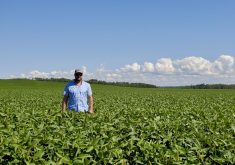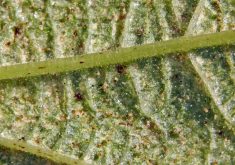Changes to Ontario’s Drainage Act could lead to a more streamlined process for farmers to make minor improvements to their systems.
“We’ve created a new process for what we’re calling minor improvement projects,” said Tim Brook, drainage program coordinator with the Ontario Ministry of Agriculture, Food and Rural Affairs (OMAFRA).
“These are projects that involve changes necessary to address a specific need for one property rather than the entire drain.”
Read Also

Senft to step down as CEO of Seeds Canada
Barry Senft, the founding CEO of the five-year-old Seeds Canada organization is stepping down as of January 2026.
Why it matters: Obtaining approvals for drainage improvements can be costly and time-consuming for producers. It is hoped changes to the Drainage Act will ease frustration and reduce approval times.
On June 30, several Drainage Act regulatory changes came into effect, said Brook. However, the former improvement process remains a part of the Drainage Act.
“Drainage is essential to our agriculture sector and our economy,” said OMAFRA minister Lisa Thompson. “That’s why we’re reducing the time it takes to make minor improvements to drainage systems that can provide positive environmental and economic benefits to farmers and municipalities.”
The streamlined process criteria requires that the request be initiated by one property owner for the benefit of one property, and that the landowner covers the cost, said Brook. There are caveats for connections and ownership for contiguous adjacent properties if the change impacts more than one owner.
“Typically, family members of adjacent properties can request a minor improvement project beyond a single property,” Brook said.
Another example is roadside access, where the drain is also a roadside ditch and requires a broader crossing for the farmer to access the field that abuts the road.
Requests involving cost-sharing initiatives fall under the major improvement process, said Brook. However, minor improvement projects are still eligible for OMAFRA drainage grants.
Larry Davis, Ontario Federation of Agriculture director for Brant, Haldimand and Norfolk, said members welcome the regulatory change because the former and often lengthy approval process could negatively impact land production.
“Drainage ditches in Ontario serve an enormous advantage to agriculture,” said Davis. “If there’s a problem with a drain and it takes six months to rectify, sometimes that can be quite a bit.”
Under the previous regulations, it could take 12 months or more to get approval for a project. Minor improvement regulations require the engineer to submit a report to the council within 180 days after their appointment.
A government form completed, signed and submitted to the municipality by producers requires that municipality to follow through, said Brook.
OMAFRA will track the new process’s uptake via project reports and grant applications and will have metrics on the first six months by February 2022.
“(Grant submissions) are going to be one of the bigger metrics to see if there is a lot of uptakes or not,” he said. “We hope it’s useful, but we’re going to have to track that over the next year or two or three to see how much it’s utilized.”
The OFA submitted a letter supporting the simplified process but requested amendments to address drainage areas that arise from urban settlements that expand onto neighbouring agricultural lands.
OFA president Peggy Brekveld pointed to the increased strain on drains from homes, parks, streets and shops abutting farmland, where once only a few farms impacted the drain system.
“Adjusting the assessment schedule to reflect these changes would be a substantial improvement,” she said, adding it’s not fair to assess farmers for addressing the accelerated run-off from urban development.
Established in 1859, the Drainage Act is among the oldest legislation in Ontario. This is the first significant amendment since 1975.
“Making these changes using the simplified engineer’s report may be the most efficient approach,” Brekveld said. “This is an important issue impacting many farmers and must be addressed.”
OMAFRA said municipalities handle land-use modifications through existing Drainage Act processes, including changes within the watershed of a drain. That includes urban settlements that expand into agricultural lands.
Fact sheets on the changes will be available shortly on the OMAFRA website. Until then, producers’ questions about the new regulations can be directed to the local municipality or OMAFRA’s Agricultural Information Contact Centre at 1-877-424-1300 or by email [email protected].















